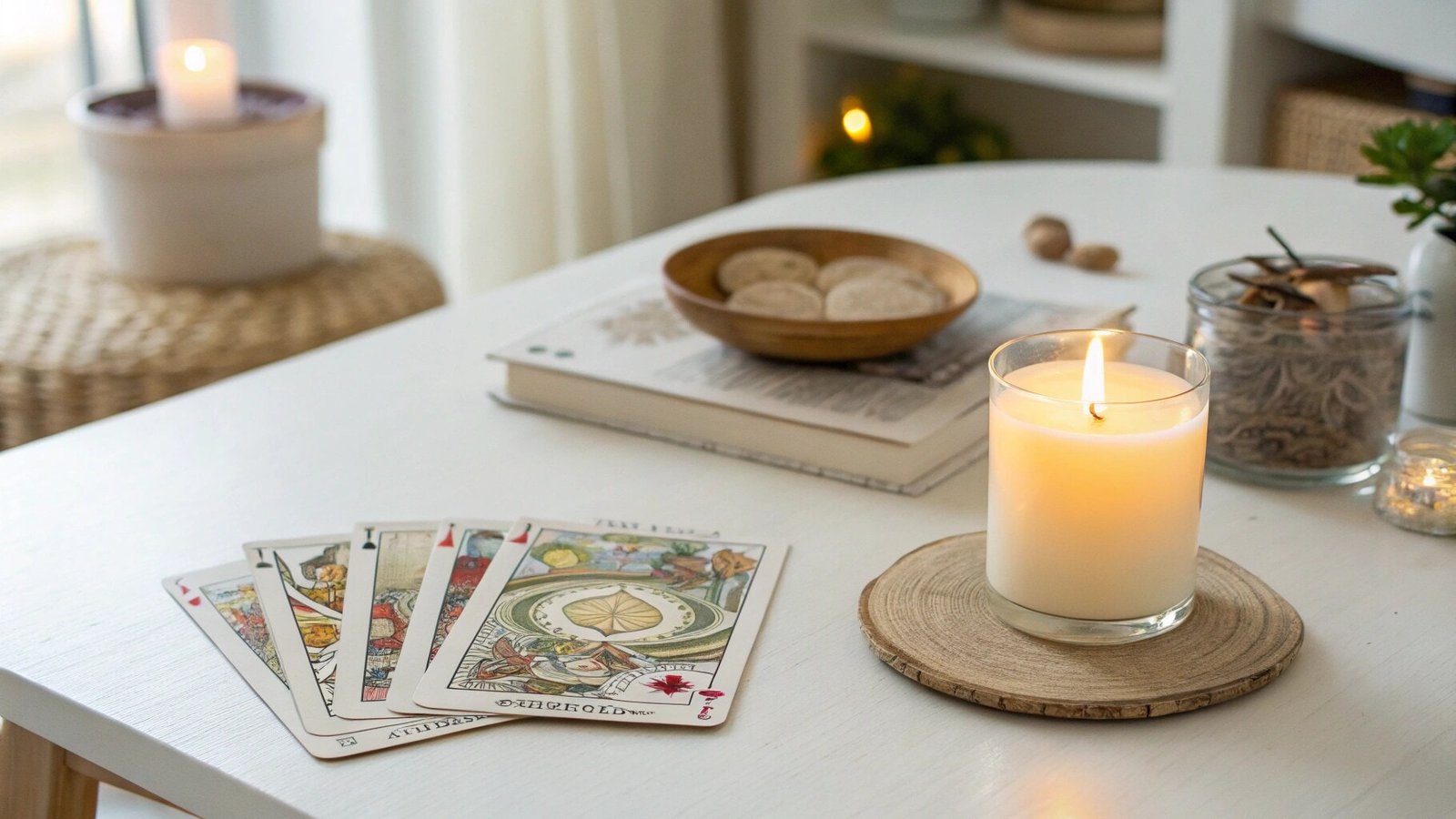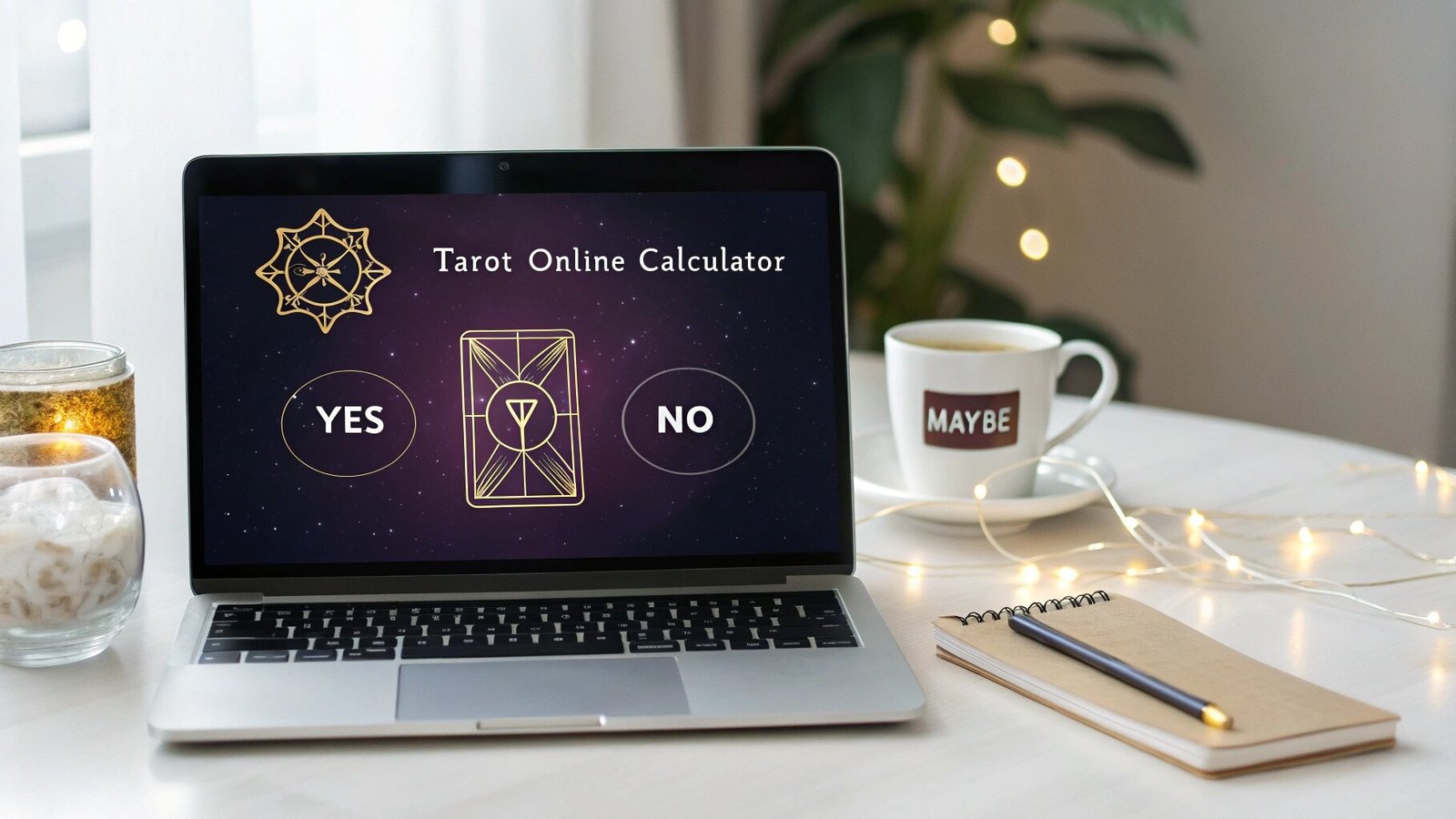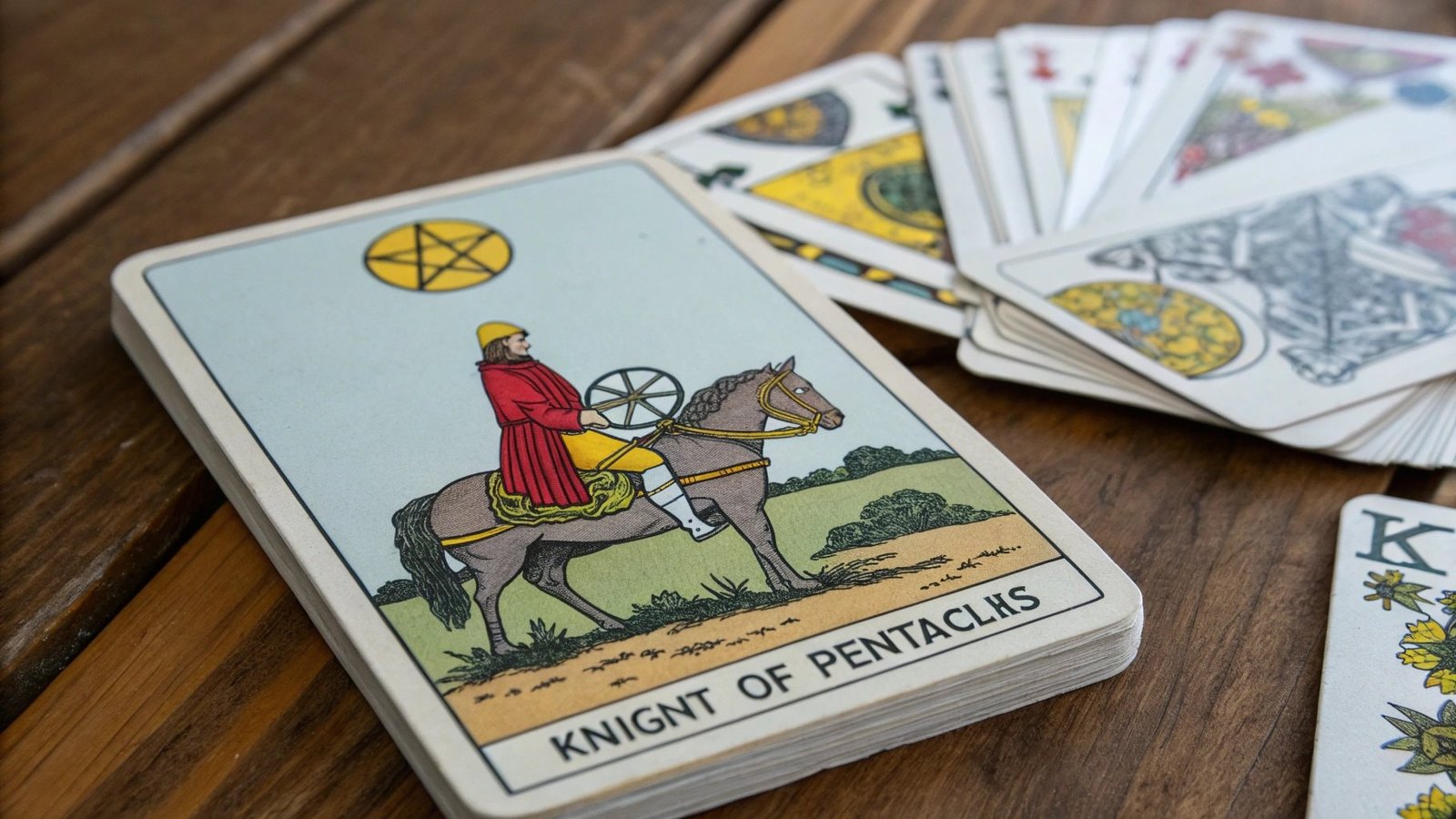Table of Contents
Have you ever felt stuck and wondered if there’s a deeper way to understand your life? Tarot reading might be what you’re looking for. It’s a practice that uses a special deck of cards to shine light on your thoughts, goals, and challenges.
In this guide, we’ll explore everything from the tarot’s history to the simple steps you can take to give yourself (or a friend) a free tarot reading. By the end, you’ll know how to pick the right deck, interpret the cards, and use tarot to find clarity in everyday life.
Key Takeaways
Tarot isn’t about predicting doom; it’s a way to reflect on your life and choices.
A typical tarot deck has 78 cards, split into Major Arcana (big themes) and Minor Arcana (daily matters).
Anyone can learn the tarot by studying the symbols, practicing simple spreads, and trusting their intuition.
Ethical reading is key—respect boundaries, keep it empowering, and seek professional advice when needed.
Daily card draws and journaling can help you grow and get to know each card on a deeper level.
Understanding Tarot Reading
Tarot reading can seem mysterious, but at its core, it’s a tool for self-reflection. These cards tell visual stories that can mirror your thoughts, feelings, and possible choices.
What is Tarot Reading?
Tarot reading is a way to gain insight into your life. You shuffle and lay out cards in a “spread,” and each card you draw helps you look at different angles of a problem or question. Every card shows symbols and pictures that spark ideas about your emotions, relationships, or future plans.
The key thing to remember is that tarot isn’t about predicting inevitable outcomes. It’s more like having a conversation with your inner self. Through the images on each of the tarot card meanings, you might realize new paths or solutions that you hadn’t seen before.
Common Misconceptions
Some people think tarot is only for psychics, but that’s not the case. With practice, anyone can learn to read tarot—no supernatural powers required. Others worry the cards invite bad luck. But tarot is really just a set of pictures that help you reflect on your life. Used wisely, it’s a helpful tool, not a scary one.
Brief History of Tarot Cards
Learning where tarot came from can deepen your appreciation for the practice. These cards didn’t start as mystical props; their story spans centuries of cultural shifts.
From Playing Cards to Spiritual Practice
Tarot started in 15th-century Europe as a simple card game. People in Italy and France played a game somewhat like a modern bridge. Over time, occult enthusiasts began linking the cards to deeper themes of esoteric traditions like astrology and numerology.
Eventually, tarot evolved from mere entertainment to a tool for self-discovery and spirituality. By the 18th and 19th centuries, French and British occult scholars started writing detailed guides on how to use tarot for guidance, and this sparked a huge cultural shift in how people viewed the deck.
A Worldwide Tradition
The Rider-Waite-Smith deck, introduced in the early 1900s, became the most recognized version in the English-speaking world. Since then, hundreds of variations have emerged—some with fantasy art, others focusing on certain cultures or spiritual ideas. No matter the design, the heart of tarot remains the same: it’s a set of archetypal images that help people understand their own stories better.
Structure of a Tarot Deck
Knowing how a tarot deck is organized can help you see the bigger picture in a reading. We’ll break down the two main groups of cards and explain why they matter.
Major Arcana (22 Cards)
These 22 cards represent big life lessons or themes—think of them as milestone moments. Each Major Arcana card has a unique name, like The Fool, The Tower, or The World, card means something and often signals a major shift or opportunity. For instance, The Fool can mean a new adventure, while Death suggests transformation (not literal doom).
When several Major Arcana cards show up in one reading, it usually means you’re dealing with major changes or events. Pay close attention to these cards because they often highlight life-altering insights.
Minor Arcana (56 Cards)
The Minor Arcana covers everyday matters. It has four suits—Wands, Cups, Swords, and Pentacles—each with 14 cards: Ace through 10, plus four “Court Cards” (Page, Knight, Queen, King).
Wands focus on creativity, ambition, and action.
Cups address emotions, relationships, and intuition.
Swords explore conflicts, logic, and communication.
Pentacles deal with money, health, and the material world.
Court Cards can represent different types of people in your life or aspects of yourself—like the creative Page of Wands or the practical King of Pentacles. Together, the Minor Arcana cards highlight your everyday challenges, joys, and decisions.
Reversed Cards
Some readers choose to interpret reversed cards (when a card appears upside down). Reversals might indicate a delay, a block, or a chance to look deeper within. However, you don’t have to read reversals if it feels overwhelming at first. Many beginners prefer to stick with upright meanings and add reversals later.
How to Choose and Care for Your Tarot Deck

Treat your deck as a trusted companion. Picking one you love and looking after it can strengthen your connection to the cards.
Selecting a Deck That Speaks to You
Tarot decks come in all themes—from classic art to modern pop culture. Choose a deck whose artwork and symbolism draw you in. The well-known Rider-Waite-Smith deck is a great starting point because most beginner guides reference it. But if a different style grabs your attention, go for it. Trust your instincts; you’ll read better with a deck you truly connect with.
Cleansing and Storing Your Cards
Many people cleanse a new deck to clear any old energy it might have picked up. You can do this by smudging with sage or palo santo, laying the cards under moonlight, or resting them on a crystal like selenite.
When you’re done reading, store your deck in a pouch, box, or even wrap it in a cloth. This keeps it safe and gives it a sense of special purpose. Some readers talk to their deck or hold it before shuffling to “warm it up.” Small rituals like these can help you bond with your cards.
How to Perform a Tarot Reading Step-by-Step
Giving your first tarot reading can be exciting. Below is a simple approach that works whether you’re reading free tarot for yourself or someone else.
Step 1: Prepare Your Space
Find a quiet spot where you can focus. Light a candle, play soothing music, or simply take a few calming breaths. The goal is to clear distractions and center yourself. If you’re reading for another person, make sure they’re comfortable and relaxed too.
Step 2: Set Your Intention
Before you shuffle, think about the main question or topic. It might help to phrase it clearly, like, “How can I move forward in my career?” or “What do I need to know about my current relationship?” Keep this question in mind as you handle the cards.
Step 3: Shuffle and Cut
Shuffle in any way that feels right—there’s no strict rule. Some people do a classic riffle shuffle, while others spread the cards out on the table and swirl them around. Focus on your question. Then, cut the deck into a few piles and re-stack them. This act gives a sense that you’ve put your personal energy into the cards.
Step 4: Choose a Spread
One-Card Draw: Simple, perfect for quick guidance or a daily check-in.
Three-Card Spread: Often laid out for Past-Present-Future or Mind-Body-Spirit. Good for exploring small questions.
Celtic Cross: A classic 10-card layout that dives into the heart of a situation, the conflicts, and likely outcomes.
Relationship Spread: Highlights the dynamic between two people—each person’s viewpoint, shared energy, and potential outcomes.
Step 5: Interpret the Cards
As you flip each card, look at the imagery. Notice any symbols or colors that stand out. Think about the card’s traditional meaning but also trust any thoughts or feelings that pop into your head. If you have multiple cards, see how they relate to each other. Maybe you notice a theme like repeated suits or a focus on Major Arcana cards.
Step 6: Reflect and Close
After laying out your spread, take a moment to reflect on the reading. What patterns did you see? Did any card resonate strongly with your life? You can journal these thoughts or share them if you’re reading for someone else. When you’re done, gather the cards back into the deck with care.
Tarot Card Meanings: A Closer Look
Tarot cards hold layers of symbolism. Let’s explore a few prominent cards in the Major Arcana and the suits of the Minor Arcana to give you a solid starting point.
Major Arcana Highlights
The Fool: A fresh start, new adventure, or taking a leap of faith without overthinking.
The Magician: Skills, resourcefulness, and the power to make things happen.
The High Priestess: Intuition, hidden knowledge, and trusting your inner voice.
Death: An ending or transformation—closing one door so a new one can open.
The Tower: Sudden change or upheaval that can lead to breakthroughs later.
The Star: Hope, healing, and renewed optimism after challenges.
The World: Completion of a cycle, achievement, and feeling at one with your path.
Minor Arcana Suits
Wands (Fire): Energy, creativity, and passion. The Ace of Wands might hint at a spark of inspiration, while the Ten of Wands can signal overwhelm.
Cups (Water): Emotions, relationships, and intuition. The Two of Cups often points to harmony with another person, while the Five of Cups might reflect disappointment.
Swords (Air): Conflict, ideas, and communication. An Ace of Swords may bring mental clarity, whereas the Ten of Swords can warn of a painful ending or betrayal.
Pentacles (Earth): Finances, health, and work. The Ace of Pentacles can signal a fresh financial opportunity, while the Five of Pentacles might show financial struggles or a sense of lacking support.
Don’t worry about memorizing every detail at once. Over time, you’ll develop a personal understanding of each card. Journaling your impressions can speed up that learning process.
Using Tarot for Personal Growth & Spiritual Practice

Seeking quick answers to your questions? Try out the free Yes or No Tarot cards calculator and find out which path may be best for you!
Tarot isn’t just about forecasting events. It can also serve as a daily tool to give wisdom to help you grow, make decisions, and nurture your inner life.
Daily Card Draw
Pulling one card each morning (or evening) helps you tune in to what’s going on inside. Ask, “What do I need to focus on today?” Then draw your card. Think about its message throughout the day. Does it align with any events or feelings you notice? This small ritual can sharpen your intuition and build familiarity with the deck.
Yes or No Tarot: Quick Answers for Immediate Clarity
Sometimes, you need a straightforward answer to guide your next step. That’s where Yes or No Tarot readings come in. With just one card, you can get an immediate “yes” or “no” response to a specific question. While these readings are simple, they’re best used for clarifying short-term choices or decisions. For instance, you might ask, “Should I take this job opportunity?” or “Is this the right time to move forward with my plans?” Remember, the card’s symbolism adds depth, so always consider the context and trust your intuition when interpreting the answer. This quick method is a handy tool when you’re seeking immediate insight.
Meditation and Visualization
You can also use tarot cards in meditation. Pick a card that resonates with what you need—maybe it’s The Hermit for introspection or The Star for hope. Sit quietly and imagine stepping into the card’s scene. Notice the colors, the characters, and the overall mood. This visualization can soothe your mind and deepen your understanding of the card’s energy.
Journaling for Self-Reflection
Keeping a tarot journal can be a powerful way to track your progress. Write down the cards you draw, along with your thoughts or emotions at the time. Over weeks or months, you’ll see patterns. Maybe you keep drawing the same suit, which could highlight an ongoing life theme. Or you notice your interpretations change as you grow.
Ethics, Limitations, & Responsible Tarot Reading
When you read tarot—especially for others—it’s important to handle it ethically. This keeps the process respectful and constructive.
Respect Boundaries and Privacy
Always ask permission before reading for someone. If you’re doing a reading for a friend, clarify what they want to know. Don’t pry into overly personal areas they’re not comfortable discussing. A good tarot reading should feel supportive, not invasive.
Avoid Fear Tactics
Challenging cards like The Tower or Ten of Swords can look alarming, but they’re not usually about doom and gloom. They often reflect big changes or the need to let go of something. Avoid scaring people by insisting something terrible will happen. Focus on ways to cope or adapt if the reading suggests difficulty ahead.
When to Seek Professional Help
Tarot isn’t a replacement for professional advice in areas like health, law, or finance. If a reading touches on these, gently suggest the person consult an expert. This protects both you and the person you’re reading for.
Advanced Tips & Tricks for Mastering Tarot
Once you grasp the basics, you might feel ready to explore more in-depth practices. These ideas can help you keep growing.
Combining Astrology or Numerology
Each tarot card can link to planetary influences or numerological energy. For example, The Emperor often connects to Aries, symbolizing leadership. If you’re interested in astrology or numerology, weaving these systems together can give extra insight. It’s a natural way to layer different symbolic languages and deepen your readings.
Creating Custom Spreads
You don’t have to stick to traditional layouts. If you have a specific question—like how to boost creativity or handle family conflicts—design your own spread around it. For instance, you could do a “Growth Spread”:
Card 1: Where you are now
Card 2: What you need to learn
Card 3: How to overcome blocks
Card 4: Possible outcome if you embrace this lesson
Making your own spreads can help you focus on the exact question in your mind, giving you a more personalized reading.
Reading with Multiple Decks
Some readers like using more than one deck at the same time. They might pull a few cards from a classic Rider-Waite-Smith, then draw clarifying cards from a different deck. Each deck has its own vibe or art style, so combining them can bring richer, more nuanced answers.
Conclusion
Tarot reading is a doorway to better understanding yourself and the world around you. By working with these 78 cards—each packed with inner wisdom and rich imagery—you can uncover insights, identify new paths, and strengthen your intuition.
Whether you do a quick daily card draw or dive into advanced tarot spreads, tarot has a way of highlighting patterns you might overlook. It doesn’t promise magic fixes, but it does offer new viewpoints and gentle guidance. When you treat the cards with respect, maintain ethical boundaries, and stay curious, tarot can be a lifelong companion for personal development and self-reflection.
If you’d like to explore an even richer perspective, try our Deluxe Astrology Yes or No Tarot Reading Online Calculator for free and see what insights await.
FAQ
Is Tarot a Type of Fortune-Telling?
Tarot can show possible outcomes based on your current mindset and choices. It doesn’t lock in your future. Think of it like a signpost showing options rather than a crystal ball that dictates what must happen.
Do I Need Special Powers to Read Tarot?
No. Anyone can learn tarot with practice. It helps to study the symbols and trust your gut feelings when a card “speaks” to you. Intuition grows over time, just like any skill.
How Often Should I Do a Reading?
That’s up to you. Some enjoy a quick daily draw, others prefer bigger spreads once a week or month. Just avoid relying on tarot for every tiny decision. It’s meant to guide, not run your life.
What If I Draw a “Scary” Card Like Death?
These cards aren’t usually literal warnings. Death often signals transformation. The Tower might mean a sudden wake-up call. They can be tough messages, but also stepping stones for growth if you handle them wisely.



